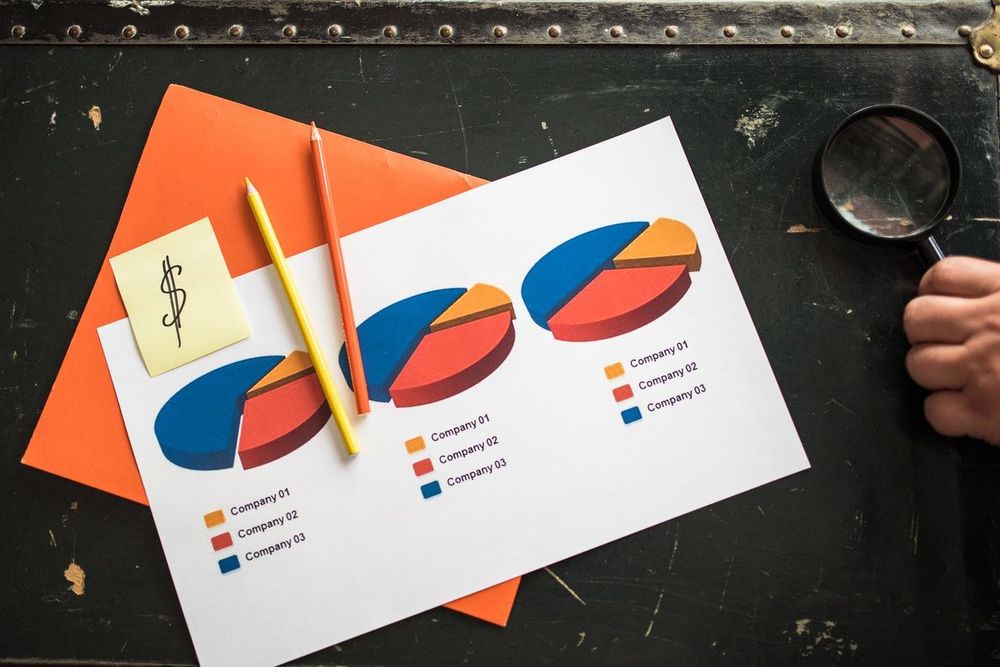Providing a progress report is a vital piece of project documentation. It's a tool used to update people involved in the project about the project's current status. There are different types of progress reporting. Some team members give daily informal reports to their project manager, and others provide a final report, including a project evaluation, once a year.
Progress reports are the perfect place to highlight any successes and draw attention to any problems. But it's hard to know where to begin when you've never done one before.
This article will tell you everything you need to know to write a progress report.
What is a progress report?
A progress report is an update generally shared with internal or external stakeholders of the business to inform them of the progression of a project or business goal. It can be written for upper management, the board, or investors who have a stake in the company.
It will be a formal report, short and straightforward, covering what progress has been made in achieving an overall goal or showing the tasks that team members have carried out to complete a project. There are plenty of formats to do this in, Microsoft Word, Google Docs, a memo, a PDF, or even an email.
Why is a progress report important?
Progress reports provide a vital status update for people who have a stake in the project or business. If a manager has assigned a project to some team members, they will want to find out the steady progress of the project. Whereas, if stakeholders have invested in the business, they will be interested in finding out what work is being undertaken to ensure the business goals are met. The report can also highlight any unexpected issues. This can be useful for feedback to managers and stakeholders too.
Progress reports are also an opportunity for the project team to showcase the work they've carried out as part of the project and highlight individual or team efforts. They can also provide essential insights into the tasks undertaken for future reference. These can go towards performance reviews for employees.

How frequently should I write a progress report?
Generally, a project's scope will define how often you should complete a progress report. If you're working towards a business goal, it could be a long-term project that only requires an update once a quarter throughout the year or monthly progress. Whereas if you were working on a shorter project, it might make more sense if you write a progress report on a weekly or daily basis.
Let's look at what the different frequencies would entail:
- Daily: This is a simple, quick overview, usually just between a team leader and team member. It's short and could be in the format of an email to outline any tasks undertaken, progress made, and to discuss problems.
- Weekly: These reports are more in-depth, again usually between a manager and team member, discussing specific tasks and achievements they hoped to do, what work was carried out, and making an action plan for the next week.
- Monthly: Usually carried out by the whole project team, these provide an overview of the entire project and tasks completed in the month. An opportunity to share success stories in the team and highlight individuals who worked particularly hard.
- Quarterly: Quarterly progress reports are the opportunity to track progress across the project and identify where KPIs are being met. This is a time to look at valuable insights from the project and discuss any unexpected things that have come up in the quarter.
- Annually: The final report of the year is a big one. The annual project report breaks down all the work carried out in the year and focuses on future planning across the following year. What hindered progress? What success stories came out of the year? What worked well? Was there team collaboration? This would be carried out across the whole project team and often shared with different teams in the business too.
How to create a progress report
Sitting down to write a project report can be a daunting task. What should you include? What doesn't belong there? How should I format it? For people who don't regularly write progress reports, it's tricky to know what to get right.
Don't panic. We're going to answer all of those questions for you.
Think about the format
Your progress report format will be based on the project's scope and what type of report you're doing. It can take different forms, depending on how thorough the report is. For example, daily progress reports could be an email or a quick meeting with a short single-page document. In comparison, a final report that comes once a year will be more extensive.
When creating a progress report, you could use Microsoft Word. You could create a slideshow on Microsoft Powerpoint and demonstrate your progress and data with charts and graphs. Or you could produce a simple Google Doc and share it with upper management at your company.
You can use progress report templates to make things easier, meaning you don't have to create the document from scratch and can work from an already formed template.
Start with names, dates, department, and project title
When writing progress reports, the first thing you'll do is clearly define the department, project title or business goal, and the names of the people involved. Including these details is crucial to highlight who is working on the project and any important dates such as the start and end.
Discuss goals
Before getting into the project details, this is a perfect opportunity to remind the reader about the project or business goals. This can cover what success is expected upon project completion and the benefit to the company and department. Refreshing the reader's memory of the goals as part of the reporting process also means they'll have a greater understanding when reading about the tasks completed.
Also, just because you're working on the project every day and have a considerable understanding of the finer details doesn't mean the people reading the report will. In project management, many different projects and goals are going on at once. So reminding them of the scope of this current project is a helpful tool to ensure they're on the right track.
Progress overview
Now you delve into the actual project progress. But at first, you're still only going to give an overview without getting into nitty-gritty details. This could be in the form of a percentage to demonstrate how far along with the project you are. You should also provide some supporting sentences to explain what progress has been made.

It should be minimal, as you will break down the work in the next section. This is the place to highlight a couple of successes and identify problems. Unexpected issues pop up in projects constantly, and it's okay to draw attention to them.
Detailed breakdown of work completed
This section is where you provide an extensive breakdown of all tasks completed, outline what tasks remain, and acknowledge if there's any task redundancy. Sometimes as you near project completion, it becomes clear that specific tasks are no longer necessary.
This part of the progress report is the meatiest, full of information and data. If you have identified and listed problems, you could also provide solutions to reassure project management that you have it all in hand. If you're going to use charts, graphs, or screenshots, this is the right place.
Finish with a strong conclusion
Once you've established all the progress in the report, you can end it with a short conclusion about the subsequent actions and tasks. This is also an opportunity for you to open up a dialogue with the project managers and discuss the report.
Tips for creating an excellent progress report
Now that you know what information to put in the progress report, we've put together some tips that will help you with progress report writing and business writing in general.
Use simple and straightforward language
When writing progress reports, it's essential to keep the language simple. It should be a concise birdseye view of the project instead of being laden with technical jargon that is difficult to understand. This is especially vital when you've written the progress report for external stakeholders and investors who might not understand the project details when they are full of jargon and industry-speak.
Always ensure to be succinct, and tailor your communication to the audience.
Strengthen your evidence with data
Using data in your progress report will always strengthen your evidence. This might not be necessary for a daily progress report. But in a monthly or quarterly progress report, it can be beneficial to provide a detailed analysis of the work completed.
Use visuals
If you are using data in your progress report, consider using visuals. A pie chart or bar graph can be an excellent tool to show a lot of complex data in an easy-to-read, concise format that is more engaging for the reader.
Alternatively, you can include screenshots. For example, if your project is developing a new CRM, then it could be pertinent to provide screenshots of the product as it works its way through completion. That way, stakeholders understand how the end product will look and will see the progress made throughout.
Remember, only use visuals and data where relevant. There is no point in including things that aren't in line with the progress report.
Keep it relevant
The progress report is a short document that outlines the finer details of a project's status. That means every section and sentence has to be relevant to that project. This is not the place to go on a tangent about working conditions or discuss another project.
In summary
Progress reports are tricky since they take different formats depending on the project's scope. It's important to remember which format is the most appropriate to use depending on the length of the project and what form of progress report you're doing. A daily progress report should be a quick overview, whereas an annual one will be a detailed analysis.
When writing progress reports, remember to include only the relevant details and use visuals to keep readers engaged.
Now that you've got all the tools you need, you can get started on creating your own progress reports.



